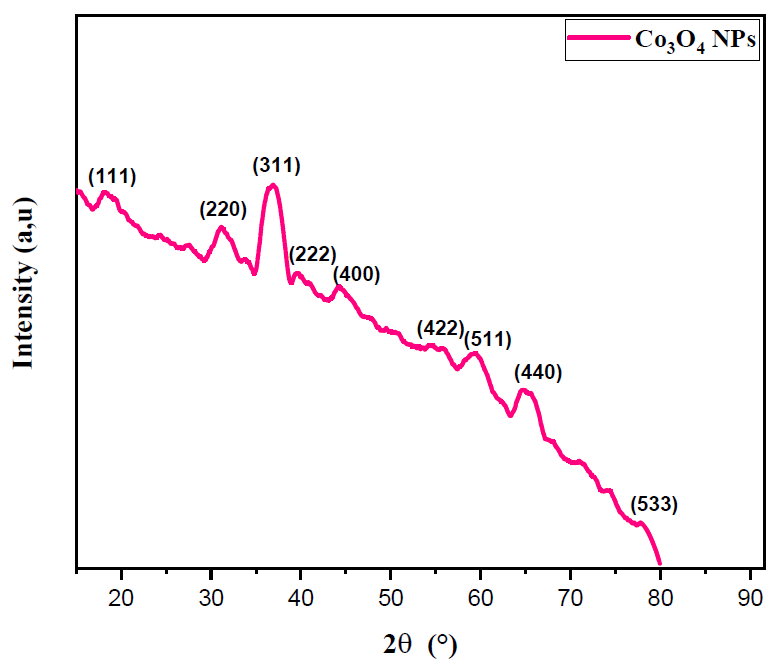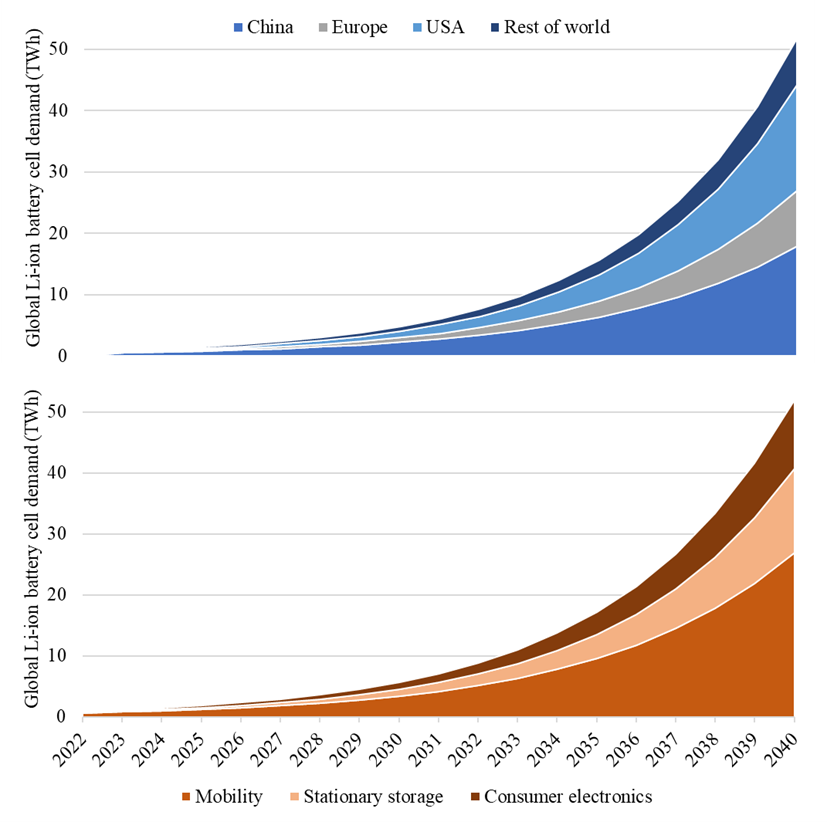Found 2 results
Article
19 February 2025The Effect of Polyethylene Glycol on Cobalt Oxide Nanoparticles Prepared Using Sonochemical Synthesis
In this work, Cobalt oxide nanoparticles (Co3O4·NPs) were synthesized via a simple sonochemical reaction by using polyethylene glycol (PEG) as a surfactant. Structural, morphological and spectroscopic analysis of obtained powder (Co3O4·NPs) was investigated by X-ray diffraction, FTIR spectroscopy and scanning electron microscope (SEM). The nanocrystalline nature of the sample was confirmed by XRD, which exhibits the cubic face-centered normal spinel structure of (Co3O4·NPs) and the space group of Fd-3m with the average crystallite size around 15 nm. FTIR spectrum shows two strong absorption bands of (Co+2–O) and (Co+3–O) which confirm the spinel structure of Co3O4·NPs. Moreover, SEM micrographs showed that the agglomeration of the nanoparticles was reduced by the addition of (PEG) surfactant and UV-Vis was used to study the synthesized material’s optical properties. The Co3O4 band gap ranged around 2.2 and 3.5 eV.

Perspective
13 September 2023Estimate of Economic Impact of EVs Li-ion Batteries Recovery
Nowadays, increasing attention is directed towards the sustainable use of raw materials. For a circular economy, recovery from spent devices represents a fundamental practice. With the transition to electric mobility, an increasing number of devices powered by lithium batteries are produced. Indeed, this is the fastest growing sector producing spent batteries, which are an important secondary source of critical raw materials, such as lithium, cobalt, graphite, and nickel. Therefore, this work aims to quantify the economic impact of recovering raw materials from lithium batteries used in the electric vehicles sector. Based on the chemical composition of the various lithium batteries and their market diffusion, the intrinsic economic value of this waste has been estimated to be around 6500 €/ton. Starting from the literature data on the global energy demand from lithium batteries and deriving the trend of their specific energy over time, the mass of material introduced into the market annually is estimated to reach 60 Mton/year by 2040. The annual amount of end-of-life lithium batteries was calculated by applying the Weibull distribution to describe the probability of failure, yielding 10 Mton/year by 2040. Finally, based on these results, the economic impact of the recovery market was assessed for two different scenarios.
